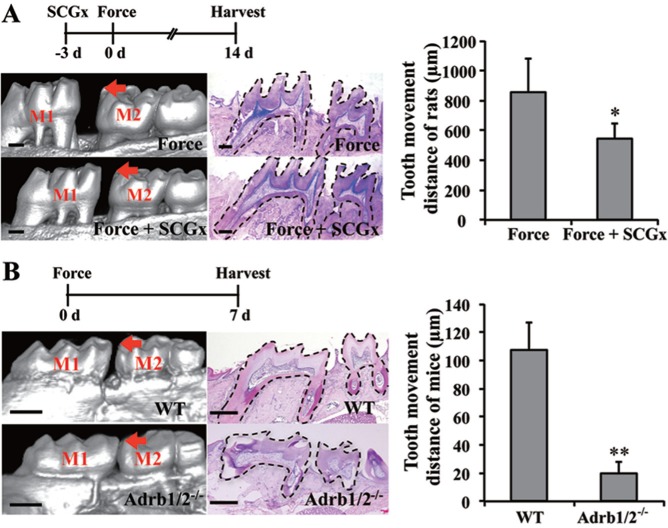Figure 1.
Sympathetic nervous system–regulated orthodontic tooth movement (OTM) partially depends on β-2 adrenergic receptor (Adrb2). (A, B) Analysis of the OTM distance by micro–computed tomography scanning and hematoxylin and eosin staining. (A) Superior cervical ganglionectomy (SCGx) decreased OTM distance after 14 d of force application in rats (n = 8). (B) OTM distance decreased in the Adrb1/2-/- group compared to the WT group after 7 d of force application in mice (n = 14). WT, wild type. Hematoxylin and eosin staining shows the integrity of the periodontal tissue around the 2 molars after tooth movement. The bar indicates 500 μm. M1, the first molar. M2, the second molar. Arrows indicate OTM distance. * p < .05. ** p < .001.

